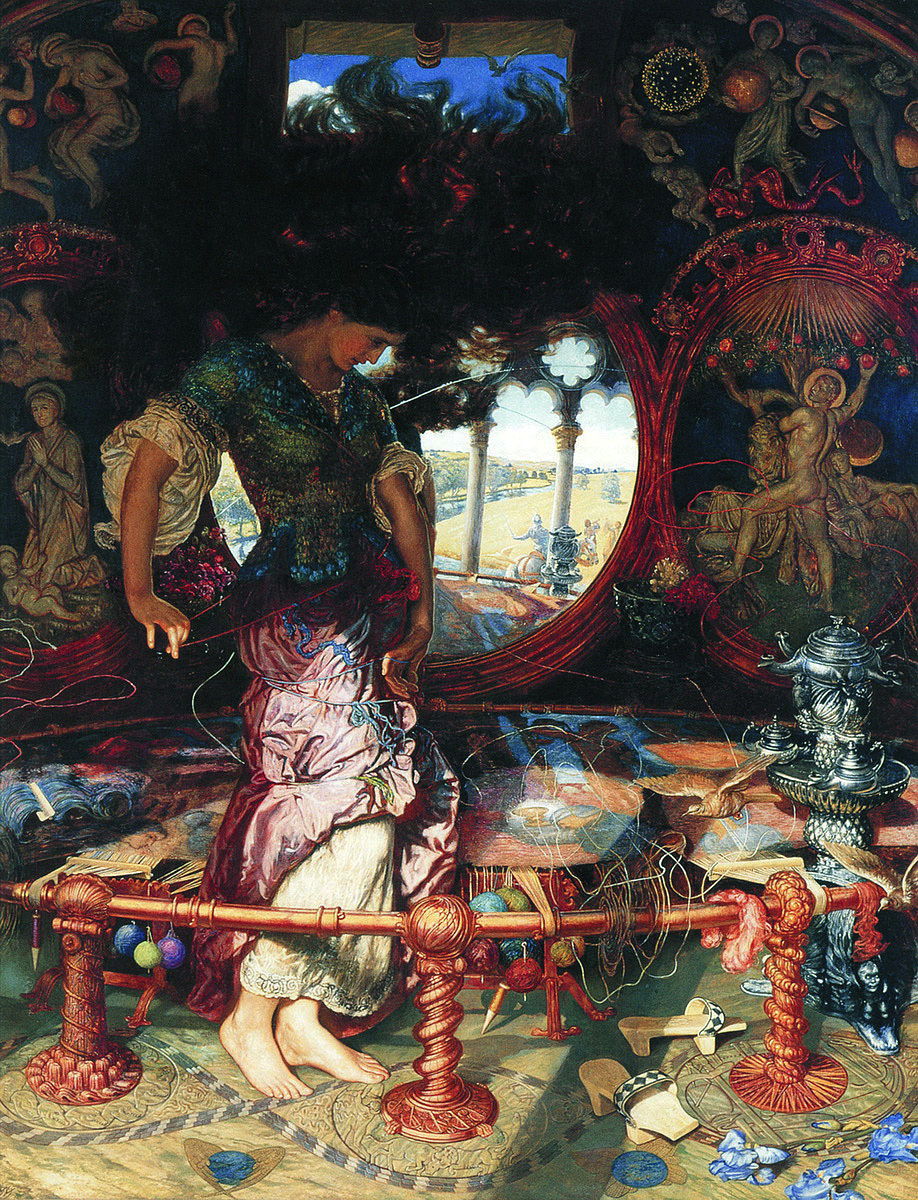Tennyson’s poem about the Lady of Shalott was derived from a thirteenth century Italian novella Donna do Scalotta, rather than Sir Thomas Malory’s Le Morte d’Arthur. This isn’t associated with events at Camelot, and this lady’s origins remain mysterious. She apparently lived in a castle connected with Camelot by river, and was subject to a mysterious curse, which confines her to weaving images on her loom, and forbids her from looking directly at the outside world.

John William Waterhouse’s third and final painting of this story gets its title from Tennyson’s poem: “I am Half Sick of Shadows” said the Lady of Shalott (1915). It shows her, thoroughly world-weary at her loom, with a large mirror facing the viewer, acting as her window on the world so that she doesn’t fall foul of the curse.
But one day, as she is sitting and weaving, the Lady of Shalott sees Sir Lancelot in her mirror.

William Holman Hunt and Edward Robert Hughes’ The Lady of Shalott (1905) shows her thrown into chaos: she is so taken with the sight of the knight that she gets up and looks directly out of her window. Knotted up in the threads of her weaving, she knows that she has broken the curse, and will die.
She leaves the tower in which she has been confined, and goes down to the river, where there is a boat bearing her name.

Already weakening, she gets into the boat and casts it off from the shore, as shown in John William Waterhouse’s first painting of The Lady of Shalott from 1888.

As the boat floats slowly down the river towards Camelot, she dies, as shown in John Atkinson Grimshaw’s The Lady of Shalott (c 1875, above), and the following paintings with the same title, by Walter Crane (from 1862) and Arthur Hughes (from about 1872-73).


When the boat, bearing just the body of the Lady of Shalott, with neither flowers nor a letter, reaches Camelot, Sir Lancelot sees her for the first time:
But Lancelot mused a little space
He said, “She has a lovely face;
God in his mercy lend her grace,
The Lady of Shalott.”
Although these two stories have many similarities in literary terms, they have very different implications for the visual artist. Elaine’s is a tale of unrequited love made more interesting with its Arthurian setting, and offers opportunities to explore the thoughts and desires of a young woman in love with the impossible.
The Lady of Shalott’s story, as shown in the paintings above, is more complex, and has themes particularly relevant to the visual arts. These include the reality of images, seen directly or in reflection, or created by weaving, and the symbolic association of the thread of life, which was about to be broken for the Lady of Shalott.
After this diversion, the next article resumes Malory’s account.

